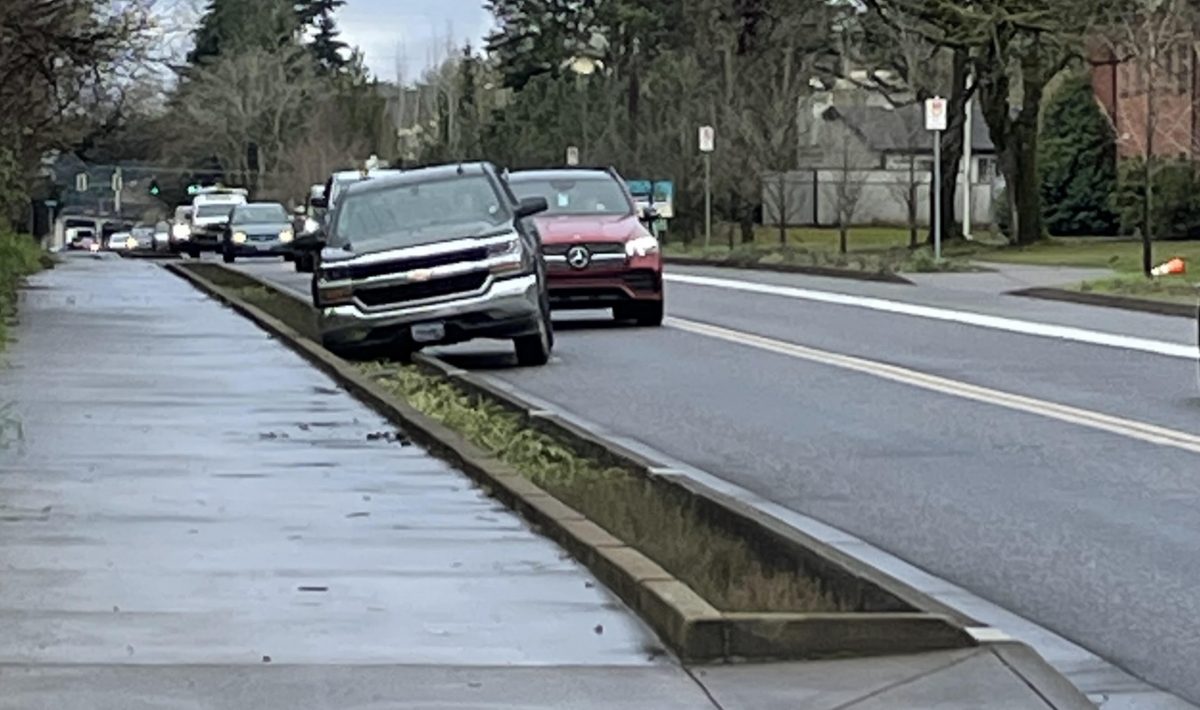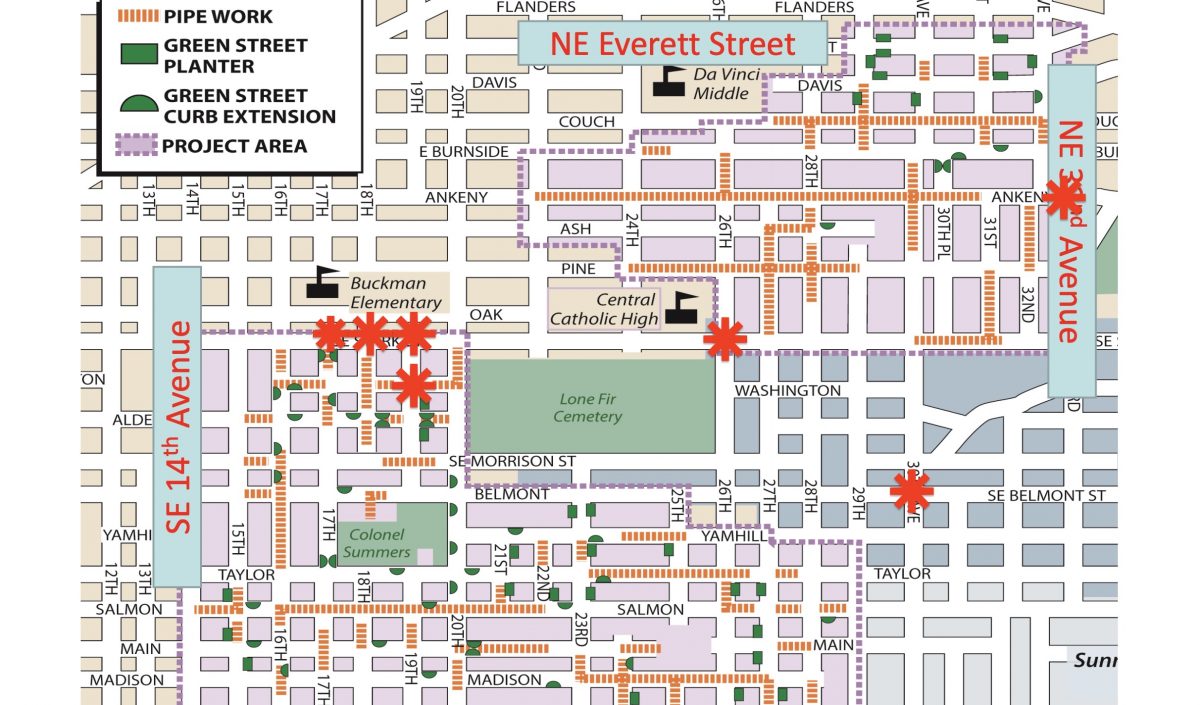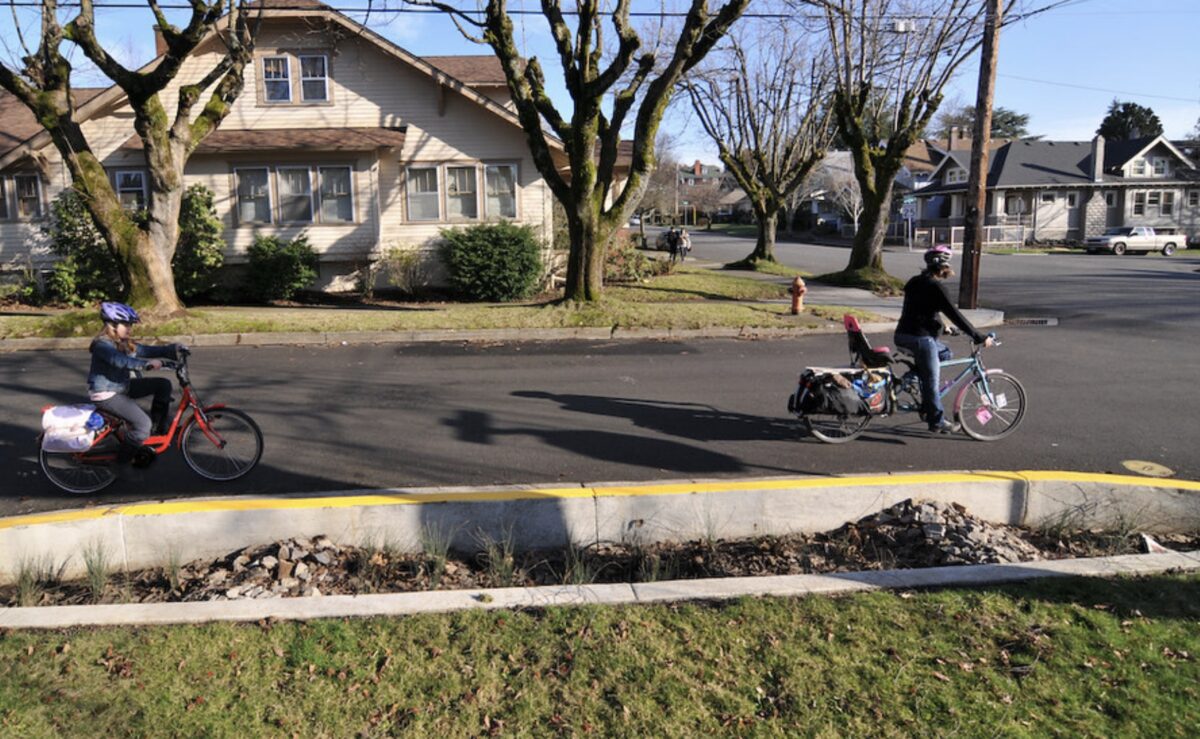
(Photo: Peter S.)
For Portland City Commissioner Mingus Mapps, last week’s intentional vehicular violence in southeast Portland hit very close to home.

“[Jean Gerich] was murdered not a stone’s throw away from where I sit right now,” Mapps shared in remarks during a city council meeting last week as he pointed to a window behind him. “I know people who were injured in this incident and to them I want to say, I am so sorry that happened to you. Please let us know how we can help you heal.”
There are many things we need to do to protect our city from this type of violence. Not knowing exactly what steps to take is not an excuse for doing nothing.
Advertisement
While perusing this week’s city council agenda I saw a ordinance that would authorize construction of the Portland Bureau of Environmental Services (BES) to move forward on their Buckman-Kerns Green Street and Sewer Project, a $24 million investment that will upgrade and install more than four miles of public sewers and build 71 green street planters (a.k.a. bioswales). My jaw hit my desk when I saw the project area map. It covers a near exact footprint of Monday’s crime scene:

And guess which commissioner is in charge of BES? The same one who lives a block away from where Jean Gerich was hit and killed.
I reached out to Commissioner Mapps’ Senior Policy Adviser Matt Glazewski to share my thoughts and make sure their office made the connection.
I was heartened to learn that Glazewski is something of an expert on green streets and stormwater runoff with previous stints at the National Oceanic & Atmospheric Association (NOAA) and Clackamas County Water Environment Services. A year ago he gave a presentation to the Oregon chapter of American Public Works Association titled, Regional Climate Change Effects and Stormwater Facility Resilience.
Advertisement
Glazewski explained how the $24 million Buckman-Kerns green street project will install dozens of curb extensions and will come with new markings and upgraded sidewalks at many locations. “All of that will help with pedestrian visibility,” he said.
With plans already set and construction to begin in a few months, it’s unlikely any changes are possible on this project. But the future might look different.
Let’s rewind a bit.
Some of you might recall when the Bike Plan for 2030 passed in February 2010, it did so without any dedicated funding. That is, until former Mayor Sam Adams stepped up with an idea for collaboration between BES and the Portland Bureau of Transportation that would “kickstart” implementation of the bike plan. Adams wanted to build bike-friendly, traffic-calming elements into green streets that would help manage transportation and stormwater. It became a huge media and political controversy, but council ultimately voted unanimously in support of the idea.
Adams’ office even made a handy video about it (narrated by his transportation policy advisor Catherine Ciarlo who was previously executive director of the Bicycle Transportation Alliance/The Street Trust and is currently manager of the Active Transportation and Safety Division at PBOT):
Portland Green Streets from Sam Adams on Vimeo.
Lest you think this is some Portlandia thing, cities across the globe are using green streets to tame traffic and make streets safer.
Advertisement
“Are there ways we can design things to make it more difficult in the future for these bad things to happen?”
— Matt Glazewski, Mapps’ senior policy adviser
More than a decade later we don’t hear about this PBOT/BES collaboration as much, but maybe it should take on new relevance in light of last week’s carnage. And in light of having a BES commissioner who prefers to walk and bike whenever possible and lives a block from where it happened, now might be a good time to revisit our green street designs.
Glazewski is more than open to that possibility.
“I like to look at these things as opportunities,” he shared on the phone today. “Are there ways we can design things to make it more difficult in the future for these bad things to happen? To enhance the right-of-way to be safer for people using the sidewalks? A way that curbs could be designed that adds any kind of safety for pedestrians? I think that’s something we want to look at for future projects.”
As for the Buckman-Kerns project, Glazewski said the Commissioner’s office wants to install a memorial plaque for Jean Gerich. That would be a nice gesture. Even better would be street designs that offer more protection to against weaponized vehicles.
— Jonathan Maus: (503) 706-8804, @jonathan_maus on Twitter and jonathan@bikeportland.org
— Get our headlines delivered to your inbox.
— Support this independent community media outlet with a one-time contribution or monthly subscription.




